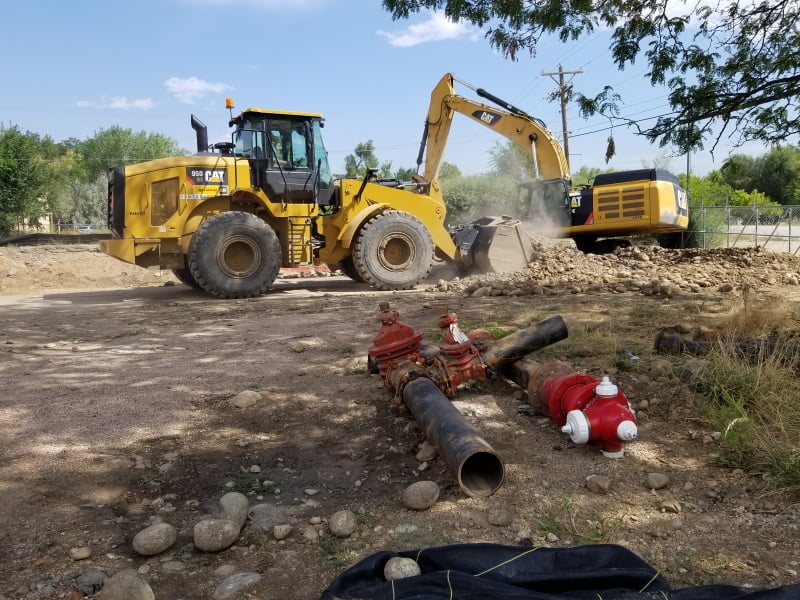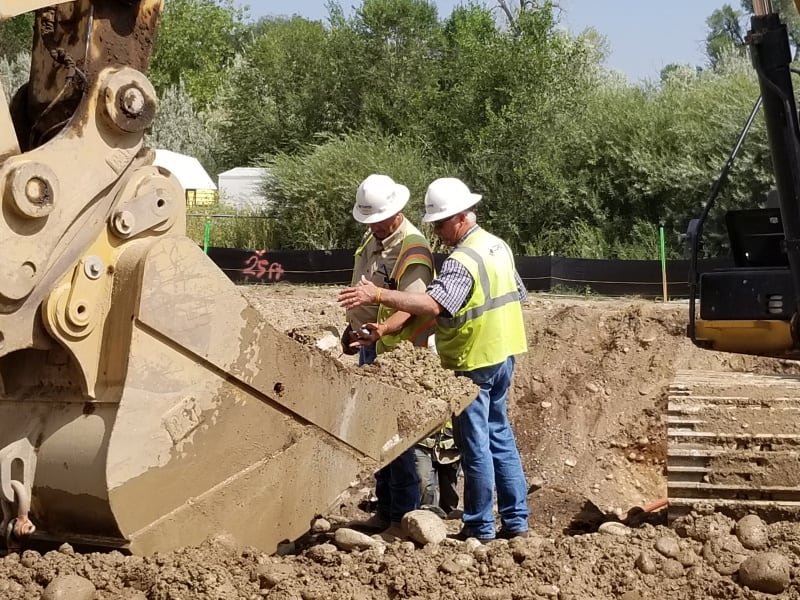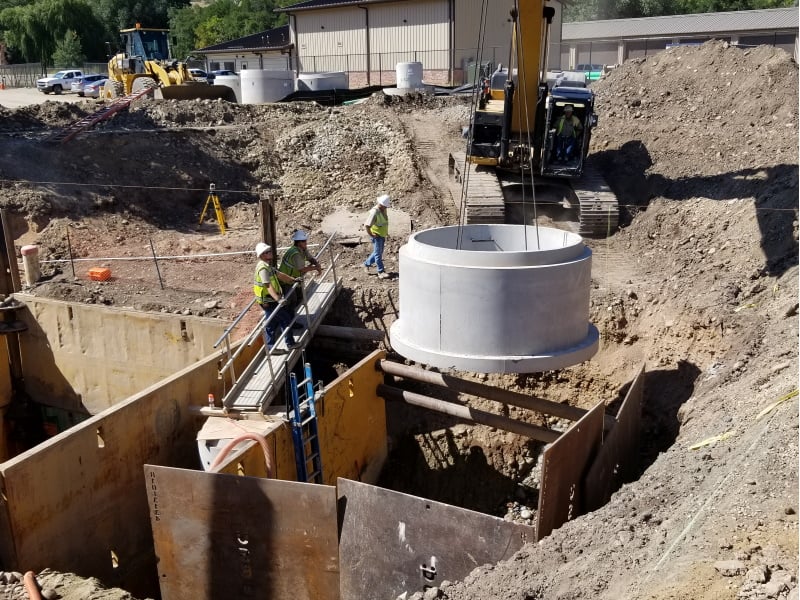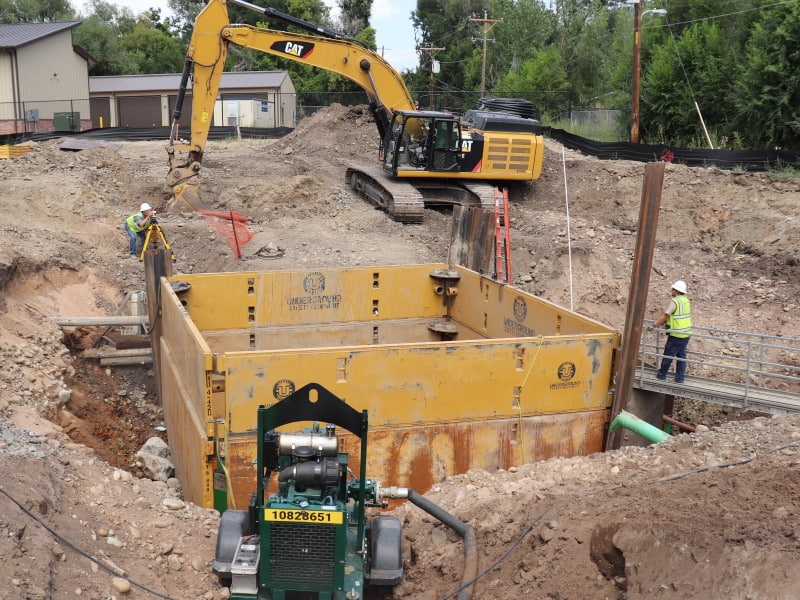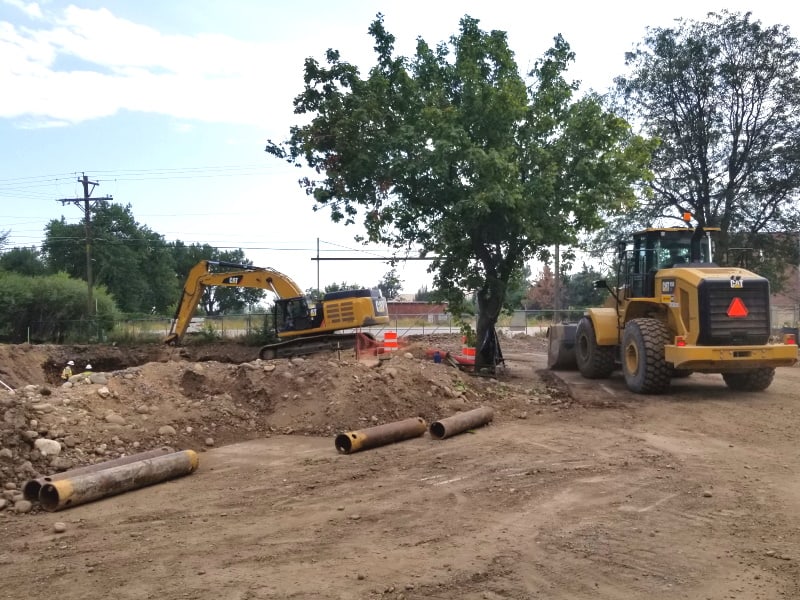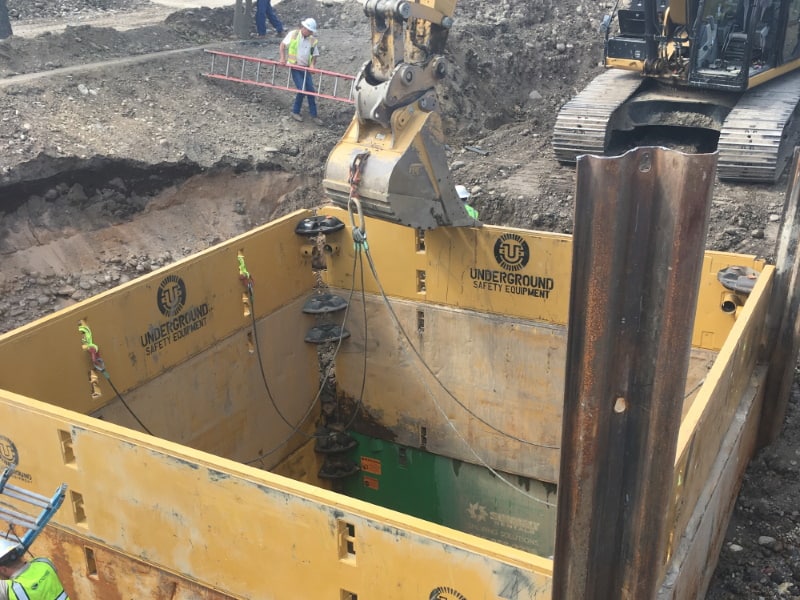Project Profile: Eastern Corridor Utilities Project
Town of Lyons, Colorado
It takes time to recover from a 100-year flood. For the Town of Lyons, it has taken six years, and the efforts to restore the community continue.
The flood of 2013 wiped out 20 percent of Lyons’ homes, two of the town’s three parks and a large portion of its commercial sector along the two tributaries of the St. Vrain River that flow through town. The damage to Lyons’ water, sewer, gas and electricity infrastructure as well as its Public Works building was so severe, residents were forced to evacuate the town for eight weeks.
While life has pretty much returned to normal since, the town government has struggled to meet the current residents’ and businesses’ utilities needs as well as unable to expand those services to welcome new residents and businesses that would make an economic contribution to its flood-recovery expenses.
Meeting federal guidelines
In order to acquire federal grants to build the new Public Works building, the Town had to construct it outside of the floodplain and relocate the entire Public Works Operations Department. After a study of viable sites, the Town purchased and annexed the decommissioned Longmont Water Treatment site, 4651 Ute Highway (Colorado 66). The new facility is comprised of two buildings: one for operations and one for storage, built respectively with HUD CDBG-DR funds and FEMA Public Assistance funds.
“This new Public Works Facility provides office space for the public works staff and allows essential access to equipment and materials, all of which are necessary to support the Town’s infrastructure daily and to respond during emergencies,” explained Erika Archer, grant manager for the Town of Lyons.
While both buildings were completed in early October, they will not receive certificates of occupancy until the buildings have sewer service.
That’s where CGRS Construction Services’ Water/Wastewater team comes in. The Town of Lyons recently contracted with CGRS to expand sewer and water lines not only to serve the Public Works Facility, but also future residential and commercial development in the area.
“The Town of Lyons must increase the size of its commercial/non-residential sector in order to provide adequate services to its population, especially since the 2013 flood, which had severe economic impacts to the Town,” Archer said.
Project breadth
The new sewer system under construction since July will serve the Eastern Corridor development area and includes:
- The design and construction of a new lift station connecting to 3,400 linear feet of a 4-inch force main line, which ties into the existing wastewater collection system;
- A waterline that connects the Public Works Facility to the existing 12-inch main water line running through the corridor; and
- Three pressure reducing valves (PRV) in vaults with connections to the existing water main, allowing for points of connection for the distribution system to expand to future residential and commercial users.
Construction gets underway
The CGRS Water/Wastewater Construction team started the project by excavating approximately 10,000 cubic yards of dirt and river cobble – creating a substantial hole – to install four concrete manholes, with the heaviest weighing 50 tons, and a pump station. To get the 30-foot depth needed to install the manholes, the CGRS team used a triple-stacked trench box shoring system measuring 20 feet square and 20 feet high to prevent the unstable walls from caving in on them.
The system needs to cross the highway and travel about two-thirds of a mile west to connect with the Stone Canyon Lift Station behind Spirit Hound Whiskey Distillery, 4196 Ute Hwy. To meet this requirement, CGRS will install 3,400 feet of force main between the Public Works Facility and the lift station, which will then pump the sewage up to the Town’s wastewater treatment plant.
A lucky find
Fortunately City of Longmont staff alerted the Town of Lyons to an old, abandoned 30-inch steel pipe that crosses Colorado 66 on the Public Works property. Located about 50 yards west of where CGRS is building the lift station, CGRS should be able to run the force main to and then through it, eliminating the need to drill under the highway before directionally drilling west. This option significantly reduces how much time and money is needed for the project. CGRS hopes to repeat the process with a a second steel pipe that crosses Colorado 36 farther down the path.
One anticipated challenge CGRS has faced is the high level of groundwater at the Public Works Facility site. The groundwater table is 5 feet deep, requiring around-the-clock pumping of sometimes 200 gallons of water per minute.
The first PRV CGRS placed is on a pipe that will provide water to the Public Works buildings and future development.
This project, slated for completion by the end of the year, is an important component to the Lyons’ flood recovery and is funded through the U.S. Department of Commerce Economic Development Administration (EDA) and the U.S. Department of Housing and Urban Development (HUD) using Community Development Block Grant – Disaster Recovery (CDBG-DR) funds, Archer said.

